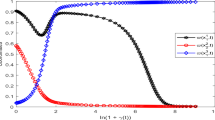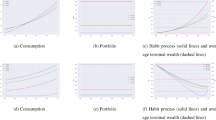Abstract
There is a formal equivalence between games, societies, and economies. Lindahl equilibrium for a game or society corresponds to competitive equilibrium for the equivalent economy. Results on existence and optimality of competitive equilibrium thus apply to the theory of games and societies. The “core” for a game or society as derived by extension from the core of an economy is “too large” to be interesting. An example illustrates that the α-core may be disjoint from the set of Lindahl equilibria. However, if the power of coalitions to inflict negative externalities is suitably restricted, Lindahl equilibria must be in the α-core.
Similar content being viewed by others
References
Arrow, K. J., “The Organization of Market Activity: Issues Pertinent to the Choice of Market Versus Nonmarket Allocation,” in Joint Economic Committee, Analysis and Evaluation of Public Expenditures: The PPB System, Washington, D. C.: U. S. Government Printing Office, 1969, pp 47–64.
Bergstrom, T. C., “Collective Choice and the Lindahl Allocation Method,” in Lin, S. Y. (ed), Economics of Externalities, New York: Academic Press 1976.
Bergstrom, T. C.. “The Core When Strategies are Restricted by Law,” Review of Economic Studies, 42, April 1975, pp. 248–257.
Debreu, G., The Theory of Value, New York: Wiley, 1959.
Nikaido, H., Convex Structures and Economic Theory, New York: Wiley, 1968.
Rader, J. T., “An Economic Approach to Social Choice,” Public Choice, 15, 1973, pp. 49–75.
Rader, J. T.. Theory of General Economic Equilibrium, New York: Academic Press, 1972.
Scarf, H., “On the Existence of a Cooperative Solution for a General Class of N-person Games,” Journal of Economic Theory, 3, 1971, pp. 169–181.
Shapley, L. and Shubik, M., “On the Core of an Economic System with Externalities,” American Economic Review, 59, 1969, pp. 678–684.
Starrett, D., “A Note on Externalities and the Core,” Econometrica, 41, 1973, pp. 179–183.
Author information
Authors and Affiliations
Rights and permissions
About this article
Cite this article
Bergstrom, T., Rader, T. An economic approach to social choice — II. Public Choice 33, 17–31 (1978). https://doi.org/10.1007/BF00118355
Issue Date:
DOI: https://doi.org/10.1007/BF00118355




